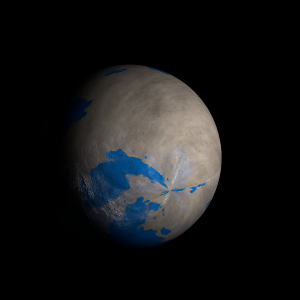|
|
Space Astro
|
Info for exoplanet "Rontri"
| Scientific (actual) data |
|---|
| Planet | GJ 414 A c |
| Planet status | Confirmed |
| Mass sini | 0.17705 |
| Radius | 0.7833 |
| Orbital period | 748.3 |
| Semi major axis | 1.43 |
| Orbit eccentricity | 0.093 |
| Discovered | 2020 |
| Updated | 2020-09-15 |
| Omega | 91 |
| K | 5.45 |
| Temperature (kelvin) | 123.3 |
| Publication | Published in a refereed paper |
| Detection type | Radial Velocity |
| Mass detection type | Radial Velocity |
| Star name | GJ 414 A |
| Right ascension | 167.77° |
| Declination | 30.45° |
| Mag v | 8.9 |
| Star distance | 11.893 |
| Star metallicity | 0.24 |
| Star mass | 0.65 |
| Star radius | 0.68 |
| Star sp type | K7V |
| Star age | 12.4 |
| Star temperature | 4120 |
| Wikipedia article | GJ 414 A c |
Back
| |
| Fictional info (?) |
|---|
| Suggested name | Rontri |
| Planet type | Cold planet |
| In English, Rontri is often referred to as the "gray planet" because the molecular hydrogen prevalent on its surface gives it a deep gray appearance that is distinctive among the astronomical bodies visible to the naked eye.
The planet is named after the deity Rontri, the demon of fear.
Rontri is a cold planet and is sometimes called Earth's "sister planet" because of their similar size, mass, proximity to GJ 414 A, and bulk composition.
The rotational period and seasonal cycles of Rontri are likewise similar to those of Earth, as is the tilt that produces the seasons.
The two polar ice caps appear to be made largely of rock.
Rontri has been explored on several occasions by robotic spacecraft, most notably during the early Pioneer and Wayfinder flyby missions and later by the Hawking orbiter.
Its north and south poles, therefore, lie where most other planets have their equators. |
| Atmosphere | Methane | 50% |
| Molecular hydrogen | 22% |
| Ammonium hydrosulfide (NH4SH) | 18% |
| Ozone | 5.3% |
| Hydrogen deuteride (HD) | 4% |
| Neon | 0.077% |
| Carbon dioxide | 5.0E-6% |
| Atmospheric pressure | 4 bar |
 |
| No known satellites |
| Google search for Rontri |
|
Website by Joachim Michaelis
|
|
|
|